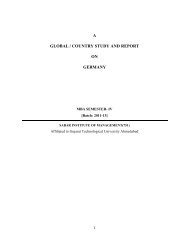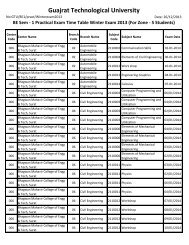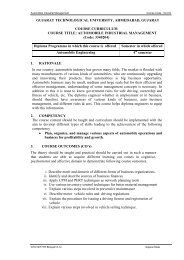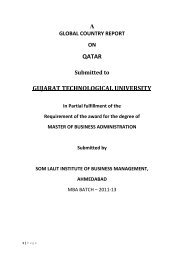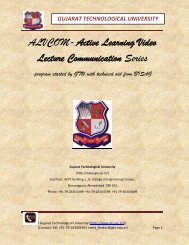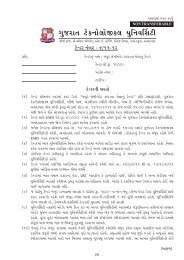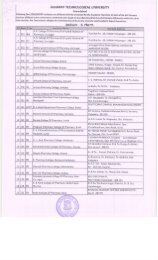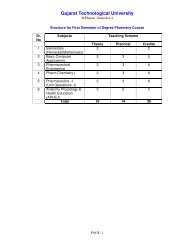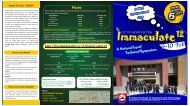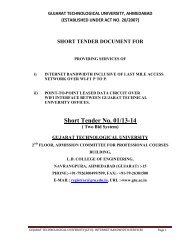708-Chaudhari Technical Institute, Gandhinagar - Gujarat ...
708-Chaudhari Technical Institute, Gandhinagar - Gujarat ...
708-Chaudhari Technical Institute, Gandhinagar - Gujarat ...
Create successful ePaper yourself
Turn your PDF publications into a flip-book with our unique Google optimized e-Paper software.
their own, the Japanese government felt the economy should be guided in this<br />
direction through industrial policy.<br />
Japan's methods of promoting exports have taken two paths. The first was to<br />
develop world-class industries that can originally substitute for imports and<br />
then competition in international markets. The second was to provide<br />
incentives for firms to export.<br />
During the first two decades after World War II, export incentives took the<br />
form of a mixture of tax release and government support to build export<br />
industries. After joining the International Monetary Fund (IMF) in 1964,<br />
however, Japan had to go down its major export motivation — the total<br />
exception of export income from taxes — to comply with IMF procedures. It<br />
did maintain into the 1970s, however, special tax handling of costs for market<br />
development and export promotion.<br />
Once constant trade deficits came to an end in the mid-1960s, the need for<br />
export promotion policies diminish. In effect all export tax incentives were<br />
eliminate over the lessons of the 1970s. In the 1980s, Japan continued to use<br />
industrial policy to promote the growth of new, more complicated industries,<br />
but direct export promotion measures were no longer part of the rule package.<br />
The 1970s and 1980s saw the manifestation of policies to control exports in<br />
certain industries. The great success of some Japanese export industries<br />
created a reaction in other countries, either because of their success per se or<br />
because of allegations of unjust competitive practices. Under General<br />
Agreement on Tariffs and Trade (GATT) rule, nations have been averse to<br />
raise tariffs of import quotas. Quotas violate the guidelines, and raise tariffs<br />
goes beside the general trend among industrial nations. Instead, they have<br />
resorted to realistic the exporting country to "freely" restrain exports of the<br />
wrong product. In the 1980s, Japan was to a certain extent willing to bring out<br />
such export chains. Among Japan's exports to the United States, steel, color<br />
tube sets, and automobiles all were subject to such chains at a variety of<br />
times.<br />
106



